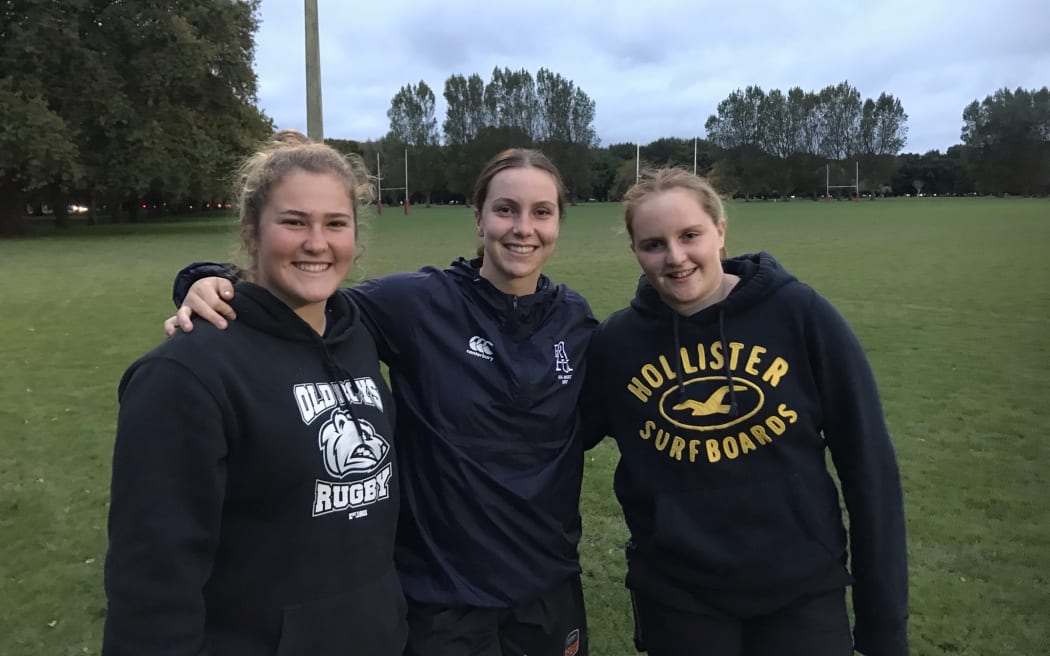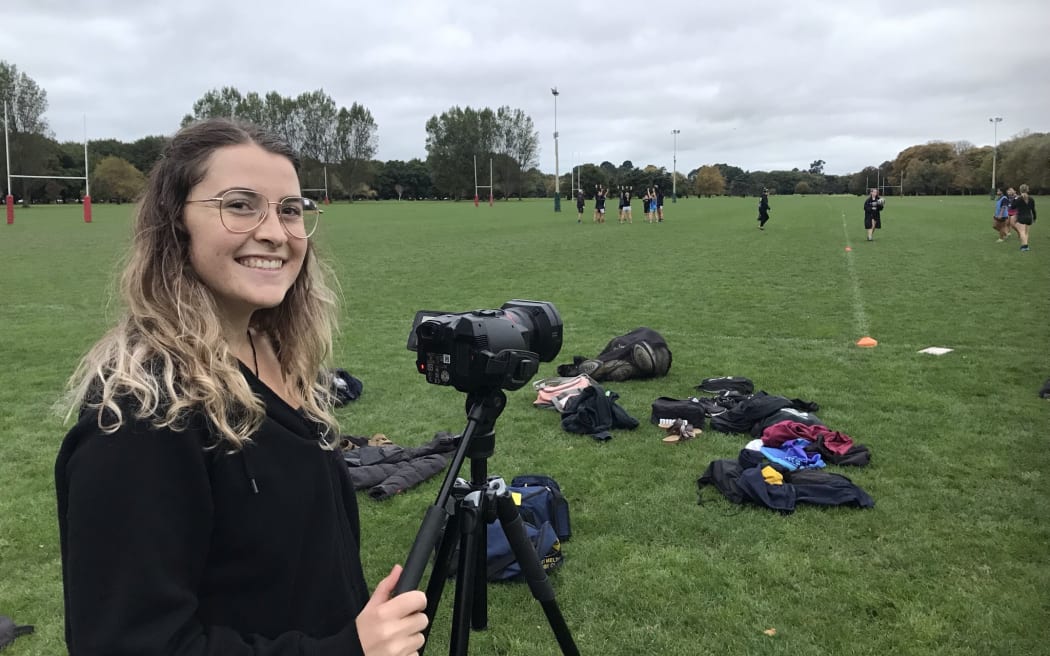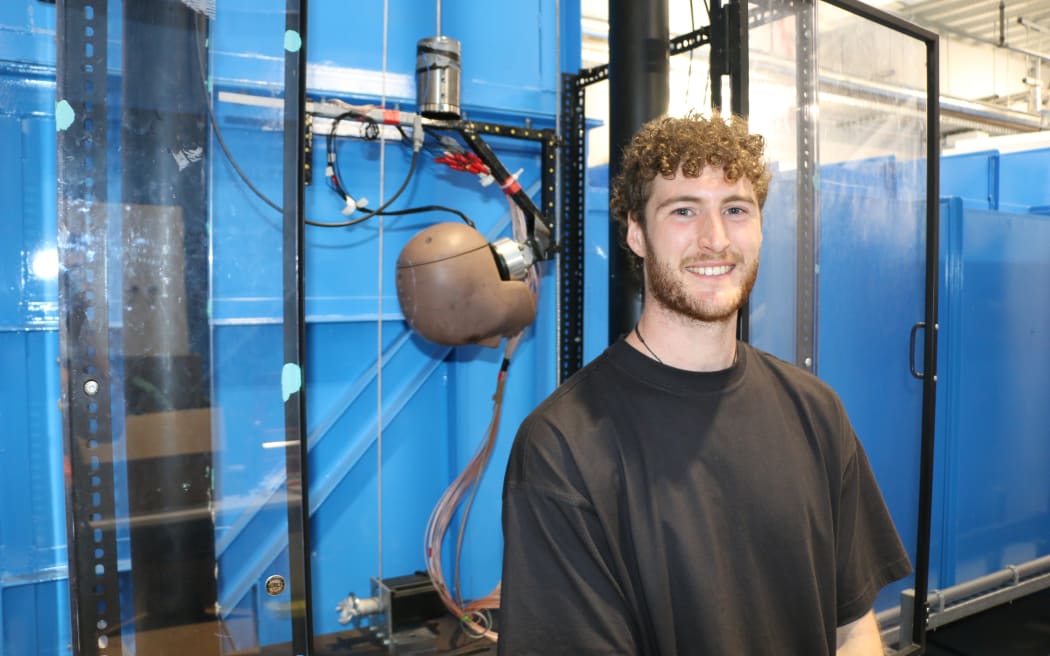Grace doesn’t think about head knocks when she plays rugby: “If you see your teammates get concussed it can be scary, but when you’re playing, I feel like it doesn’t cross your mind, you are just more focused on the game.”

Lauren, Grace and Eve are junior rugby players participating in a study investigating concussion. Photo: Claire Concannon / RNZ
Follow Our Changing World on Apple Podcasts, Spotify, Stitcher, iHeartRADIO, Google Podcasts, RadioPublic or wherever you listen to your podcasts
But increasingly researchers, clinicians, governing bodies, parents, and players are thinking about it. With increased research linking head knocks with neurodegenerative diseases later in life, and legal proceedings being issued by rugby union, rugby league and football players to various governing bodies, now, more than ever, people want to understand what the risks are, and how to mitigate them.
While to date there has been a gap in knowledge about the risks at a junior level, there are a few studies currently underway in Aotearoa aimed at filling this.
One is working with Grace’s team.
Led by Professor Nick Draper at the University of Canterbury, the study aims to follow 40 junior male and female rugby players across every training and game in one full season to work out what their exposure is in terms of number of incidences, and their magnitudes.
Nicole Spriggs, a PhD candidate at Lincoln University, is tracking the girls’ teams. She does this by using mouthguards that are moulded specifically for each player using dental scans, and which contain accelerometers. They are set to measure any head acceleration event over eight G – an equivalent to your head wobbling as you bounce on a trampoline. To verify each incident Nicole also videos each training and match.

Nicole Spriggs videos a training session. Photo: Claire Concannon / RNZ
While Nicole is focused on investigating incidences in female junior players, her University of Canterbury PhD colleague Stefan Henley is focused on doing the same with under 16 boys’ teams. All players also do an MRI and neurocognitive test before and after each season that Nicole and Stefan will use to investigate if there have been any changes in the structure and function of the player’s brains.

University of Canterbury PhD candidate Stefan Henley is studying head knocks in high school male rugby players. Photo: Claire Concannon / RNZ
Their work is part of a wider study that aims to collect information around junior rugby players’ exposure to head injury, and what could be implemented to reduce the risks. As part of this, University of Canterbury engineering PhD candidate Danyon Stitt has been looking into the standards used to test rugby headgear, and how they align with real life on-the-pitch incidences.

University of Canterbury engineering PhD candidate Danyon Stitt and the drop test rig. Photo: Claire Concannon / RNZ
Listen to the episode to learn more about the work of this research group, the potential dangers of head knocks in sports, and what the players themselves think about it.
The research covered in this episode is funded by the Neurological Foundation, Canterbury Medical Research Foundation, Pacific Radiology, and the Maurice & Phyllis Paykel Trust. Nicole Spriggs is funded by the Lincoln University Aoraki Doctoral Scholarship for Māori.
To learn more:
-
Stefan, Danyon and their supervisor Professor Nick Draper gave a presentation on their initial findings for the Neurological Foundation during Brain Awareness Month 2023.
-
Some of the researchers involved in the study into head knocks with high school rugby players from Gisborne spoke to Nine to Noon in April 2022 about the study.
-
Associate Professor Melanie Bussey spoke to Summer Times earlier this year about the University of Otago study commissioned by World Rugby, also known as the ORCHID (Otago Rugby Community Head Impact Detection) study.
-
Dr Melanie Bussey spoke to Our Changing World in 2018 about her research into concussion.


